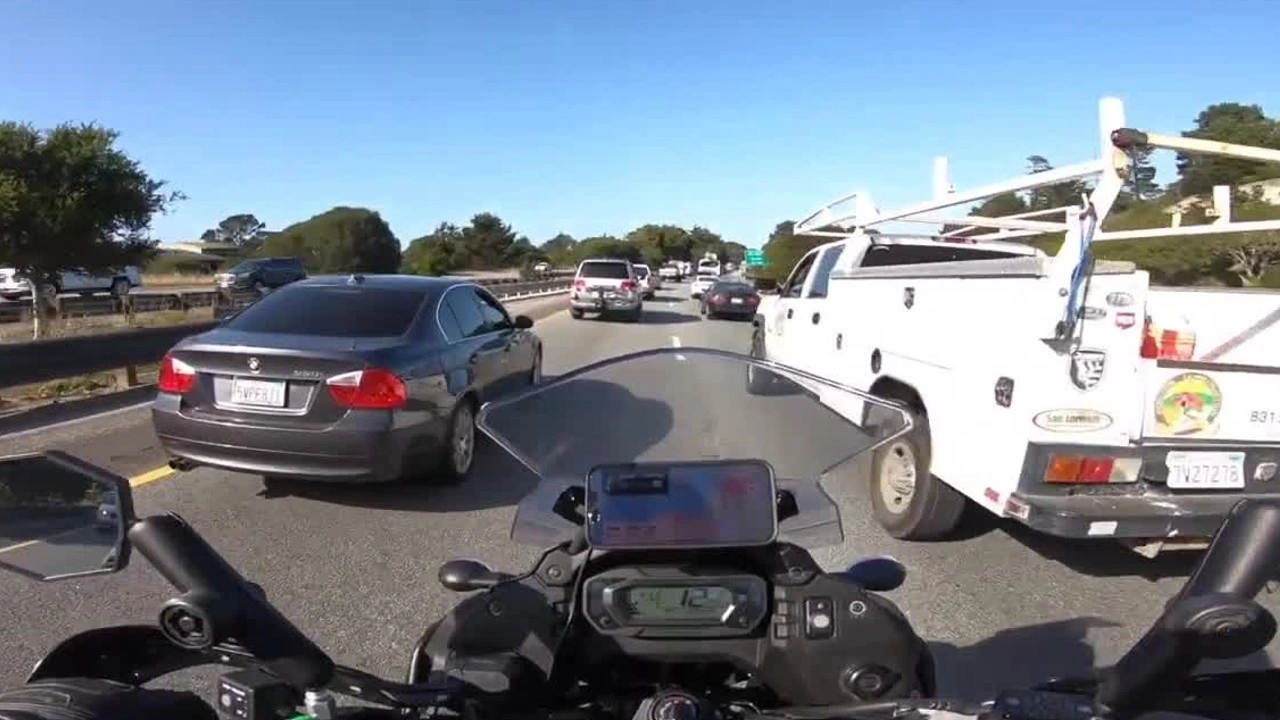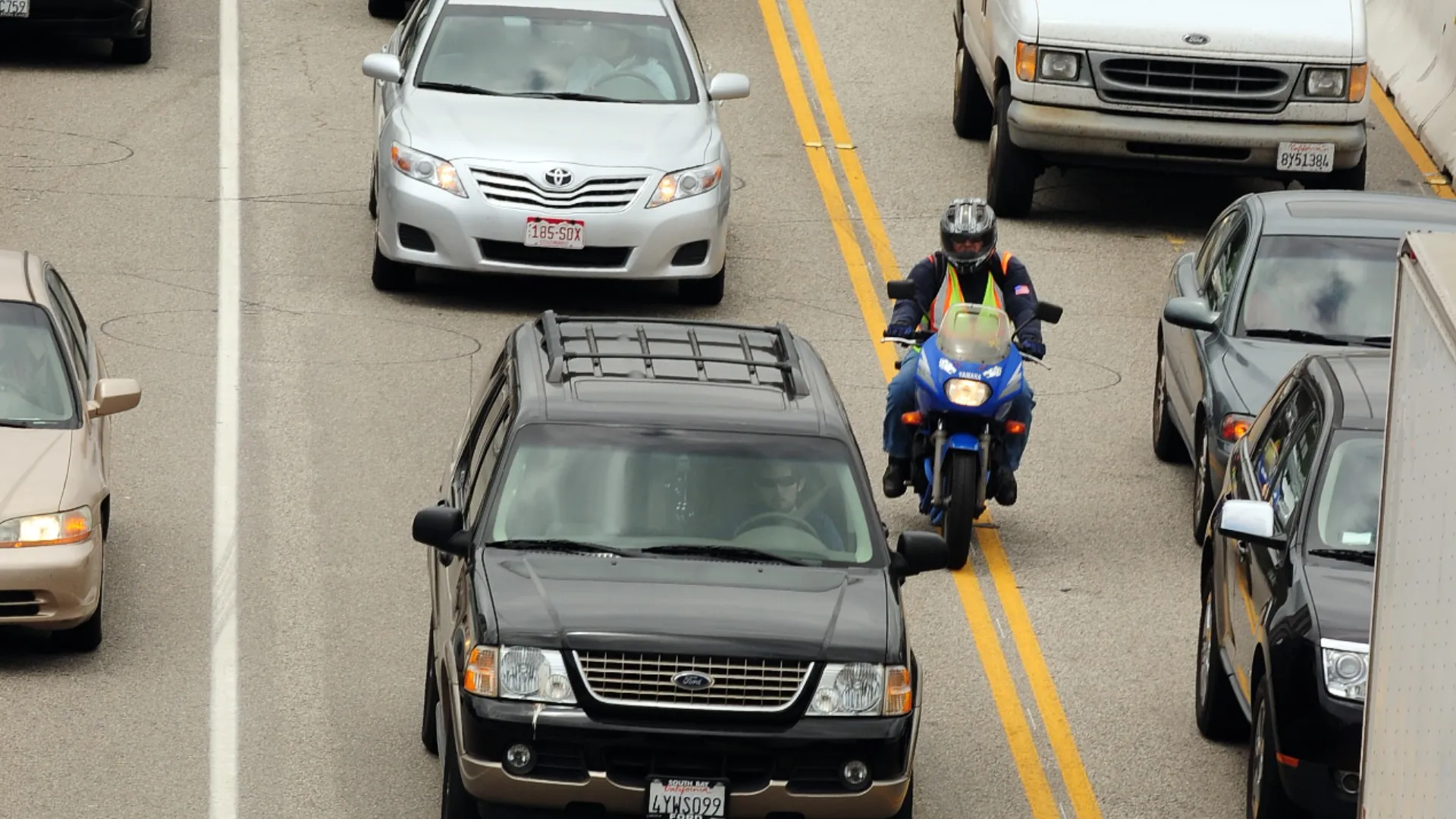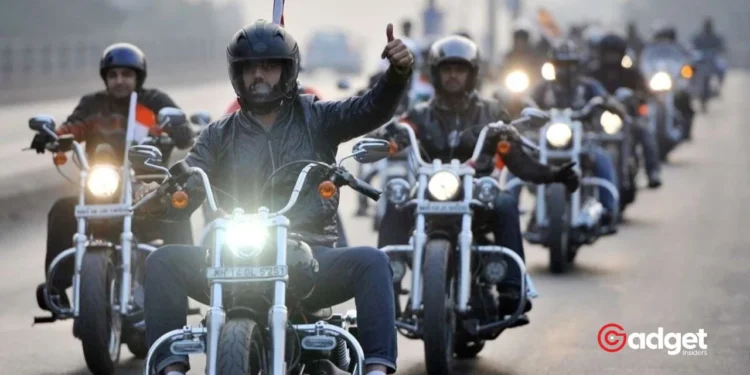As the clock ticks closer to July 1, 2025, Minnesota motorcyclists are gearing up for a significant change in their road-sharing practices. The much-anticipated motorcycle lane-splitting law, a topic of both concern and celebration, is set to redefine the commuting experience for two-wheeled travelers.

Safety First: The Heart of the New Law
Amidst the growing number of vehicles on the roads and increasing traffic congestion, Minnesota’s decision to legalize lane-splitting aims primarily to enhance safety for motorcyclists. Phil Stalboerger, a vocal advocate for the law, knows all too well the dangers posed by stationary traffic.
“I’m a sitting duck if I’m sitting in stop-and-go traffic. It happened so fast that I was rear-ended by a distracted driver.”
This incident, which led to severe injuries for him and his wife, highlights the vulnerability of motorcyclists caught in traffic jams.
Starting next year, motorcyclists will be permitted to ride between lanes of slow-moving or stopped traffic at speeds of 15 to 25 mph, depending on traffic conditions. This method, known as lane-splitting, is not just about beating the traffic—it’s a strategic move to avoid being overlooked by other larger, faster-moving vehicles.

Navigating Through Education and Enforcement
To ensure a smooth transition to this new reality, the state has allocated $200,000 for a public education campaign. This initiative will include pamphlets and public service video announcements aimed at educating both motorists and motorcyclists about the nuances of the new law. Jed Duncan, a motorcycle safety instructor at Rider Academy in St. Paul, emphasized the importance of visibility for motorcyclists.
“In bumper-to-bumper traffic, it’s difficult for motorcyclists to be seen, so this provides one more option for the motorcyclist to put themselves in a good place,” The law also addresses potential resistance from other drivers; those attempting to obstruct motorcyclists in legal lane-splitting could face misdemeanor charges.
Community and Legislative Support
The passage of this law marks a rare moment of bipartisan agreement in the 2024 legislative session. It reflects a broader understanding and acceptance of the unique challenges faced by motorcyclists on the roads.
“The motorcycle community does not want motorcyclists to be abusing this law,”
Stalboerger underscored the collective commitment to safety over convenience.

Minnesota Lane-Splitting :Promoting Safety and Efficiency
As Minnesota prepares for this significant change, the focus remains steadfast on safety and education. By allowing lane-splitting, the state is not only helping motorcyclists to maneuver more safely but is also potentially easing traffic congestion for all road users.
As these new regulations take shape, they promise to bring a new era of road safety and cooperation among Minnesota’s diverse community of road users. The success of this law could serve as a model for other states grappling with similar traffic and safety challenges, paving the way for a safer and more efficient future on America’s bustling roadways.









